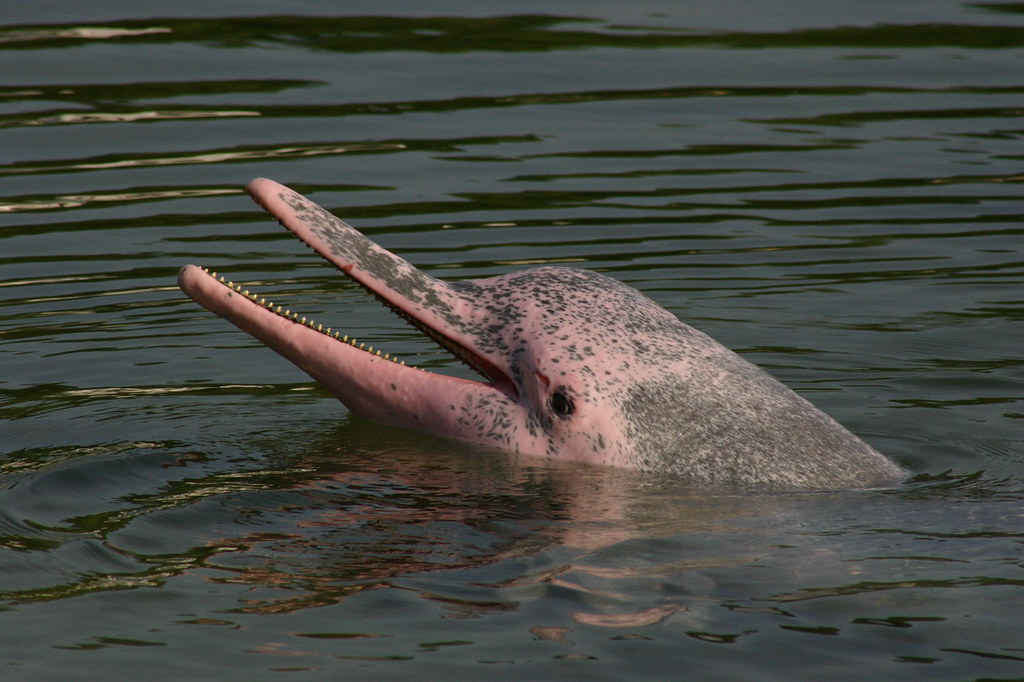
Where Are Pink Dolphins Found? Pink dolphins are found in the Amazon and Orinoco river systems in South America1.
These unique mammals inhabit freshwater habitats and are known for their distinct pink coloration, making them a rare and fascinating species to observe in their natural environment.
The fascinating pink dolphins live in South America’s Amazon and Orinoco river systems.
These unusual animals, sometimes referred to as pink river dolphins or boto, are only found in freshwater environments.
Pink dolphins in their natural habitat are an uncommon and interesting sight to behold, with their bright pink coloration and kind disposition.
Because of their critical function in the ecology, these dolphins’ protection is essential to safeguarding their rare and exquisite species.
Witnessing pink dolphins in their native environment is a once-in-a-lifetime opportunity to appreciate the marvels of the natural world.
Table of Contents
The Enigmatic Pink Dolphins
Physical Appearance: Blood vessels closest to the skin’s surface give pink dolphins, also called Boto dolphins, its distinctive pink tint2.
They can easily navigate the Amazon River Basin’s flora because of their large, narrow beaks and flexible necks.
Special Qualities: One of the few dolphin species that can survive in freshwater is the pink dolphin.
They frequently interact with people and put on acrobatic performances, earning them a reputation for intelligence and playfulness.
Cultural Significance: Pink dolphins are seen as lucky charms and protective symbols in many South American civilizations, where they are also thought to possess magical abilities.
Native American societies hold them in great regard and they are deeply ingrained in local tradition. [Where Are Pink Dolphins Found?]
See Also: Why Are Pink Dolphins Pink? Mysteries of Nature Unveiled
Discovering The Habitat
Freshwater habitats, such as those found in the Amazon River Basin and some coastal waterways, are home to pink dolphins.
The slow-moving, murky waters of rivers and drowned woods are among their habitats. Due to their unusual adaptation to these environments, these dolphins are able to travel and search for food by using their exceptional sensory talents.
These animals depend on the Amazon River Basin as their home because it offers a rich and varied environment that allows them to flourish.
In a similar vein, the coastal waters provide a special habitat that allows pink dolphins to live side by side with other marine species and adjust to the difficulties presented by the open ocean.
Comprehending the distinct environments of pink dolphins is vital for the purpose of conservation initiatives and guaranteeing the sustained existence of these amazing animals.

Interaction With Pink Dolphins
The freshwater rivers and tributaries of the Amazon and Orinoco basins in South America are home to pink dolphins, often referred to as Amazon river dolphins or boto dolphins.
Ecuador, Venezuela, Peru, Brazil, Colombia, and Ecuador comprise their natural environment. Travelers may experience ecotourism by getting up close and personal with pink dolphins and seeing these amazing animals in their native habitat.
Due to reasons like habitat damage and human activity, the population of these dolphins has been dropping, making conservation efforts to safeguard them essential.
Furthermore, many local communities have strong indigenous beliefs about pink dolphins, which frequently regard them as mystical creatures with spiritual importance. [Where Are Pink Dolphins Found?]
See Also: Are Pink Dolphins Real? Unveiling the Mystery
Frequently Asked Questions For Where Are Pink Dolphins Found?
What Is The Habitat Of Pink Dolphins?
Freshwater rivers, lakes, and estuaries in Asia and South America are home to pink dolphins. They favor calm, shallow waters that are teeming with fish. They can survive in these habitats because of their distinctive pigmentation, which helps them blend in with the shadows.
How Do Pink Dolphins Get Their Pink Color?
Dolphins’ pink coloring is caused by blood arteries that are near the skin’s surface. The dolphins’ blood flows more quickly when they are active or enthusiastic, giving them a pink appearance. This adaptation functions as a means of communication as well as aiding in body temperature regulation.
Are Pink Dolphins Endangered?
It is true that pink dolphins are regarded as an endangered species. Their survival is threatened by pollution, habitat degradation, and unintentional entrapment in fishing nets. To save their habitats and lessen the impact of humans on their numbers, conservation initiatives are being carried out.
Can Pink Dolphins Survive In Saltwater?
No, as freshwater creatures, pink dolphins are incapable of surviving in saltwater. Since their physiology is suited to the particular requirements of freshwater habitats, they should not be exposed to saltwater. Because of their extreme sensitivity to variations in the quality of the water, conservation activities are essential to their existence.
Conclusion
The tributaries of the Amazon River are home to pink dolphins. Their distinct habitat and susceptibility to harm render them a crucial focal point for conservation endeavors.
Sustaining these interesting organisms requires a knowledge of their distribution and behavior, which can only be achieved by ongoing research.

Mr. Das, a certified pharmaceutical scientist, holds a Bachelor of Science in Pharmaceutical Sciences and passionately contributes to dolphin conservation as a member of the committee in Bangladesh.


